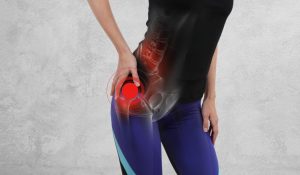
Hip pain can significantly hinder your ability to engage in physical activities, making it crucial to adopt preventive measures during exercise. This comprehensive guide explores effective strategies to safeguard your hips, enhance mobility, and maintain an active lifestyle.
Before delving into prevention techniques, it’s essential to understand the common causes of hip pain during exercise:
Overuse and Repetitive Movements: Engaging in high-impact activities without adequate rest can lead to overuse injuries.
Weak Hip Muscles: Insufficient strength in the hip muscles can result in instability and increased stress on the joint.
Poor Flexibility: Limited range of motion can cause improper movement patterns, leading to strain.
Incorrect Technique: Improper form during exercises can place undue stress on the hips.
Inadequate Warm-Up: Skipping warm-up routines can leave muscles and joints unprepared for activity.
Implementing the following strategies can help prevent hip pain during exercise:

Building strength in the hip muscles provides better support and stability. Exercises such as clamshells, bridges, and lateral leg raises target the gluteal muscles and hip abductors, enhancing joint stability.
Regular stretching improves the range of motion and reduces muscle tightness. Incorporate dynamic stretches like leg swings before workouts and static stretches such as the pigeon pose post-exercise to maintain flexibility.
Warming up increases blood flow to muscles, preparing them for activity, while cooling down helps in muscle recovery. Include light aerobic exercises and dynamic stretches in your warm-up, and static stretches in your cool-down routine.
Maintaining proper form during exercises prevents unnecessary strain on the hips. For instance, when performing squats, ensure your knees align with your toes, and avoid letting them cave inward.
Wearing shoes that provide adequate support and cushioning can reduce impact on the hips. Select footwear tailored to your specific activity, whether it’s running, cycling, or weightlifting.
Avoid sudden increases in exercise intensity or duration. Gradually progress to allow your body to adapt, minimizing the risk of injury.
Certain exercises can exacerbate hip pain, especially if performed incorrectly or without proper conditioning:
Deep Squats: Can place excessive pressure on the hip joint.
Bulgarian Split Squats: May strain the hip flexors.
Leg Press Machines: Can lead to misalignment and increased stress on the hips.
High-Impact Activities: Such as running on hard surfaces, which can aggravate hip pain.
Opt for low-impact alternatives like swimming or cycling to reduce strain.
If you experience persistent or worsening hip pain despite preventive measures, it’s essential to consult a healthcare professional. They can assess your condition and recommend appropriate treatments or modifications to your exercise routine.
Preventing hip pain during exercise involves a combination of strengthening, flexibility, proper technique, and mindful progression. By implementing these strategies, you can maintain healthy hips and continue to enjoy an active lifestyle.